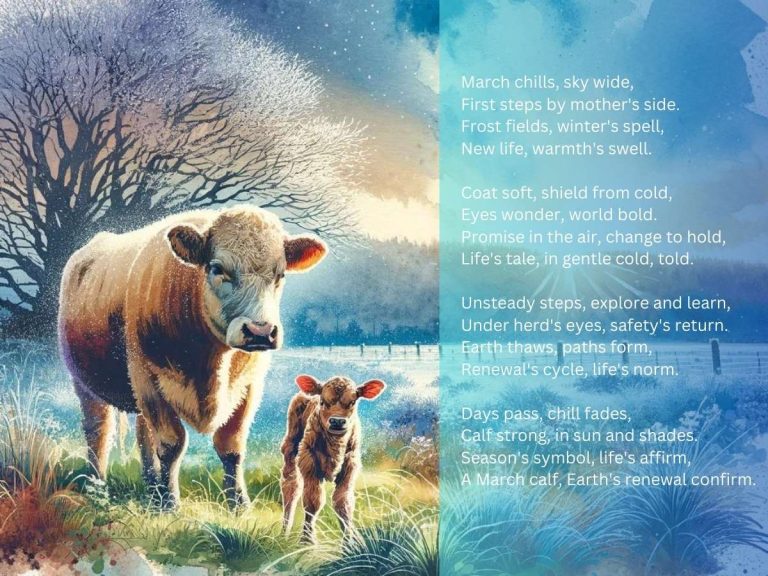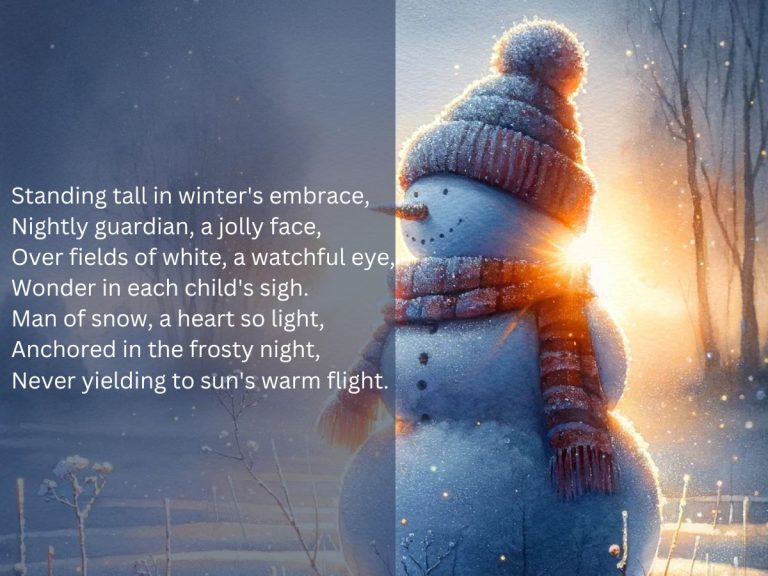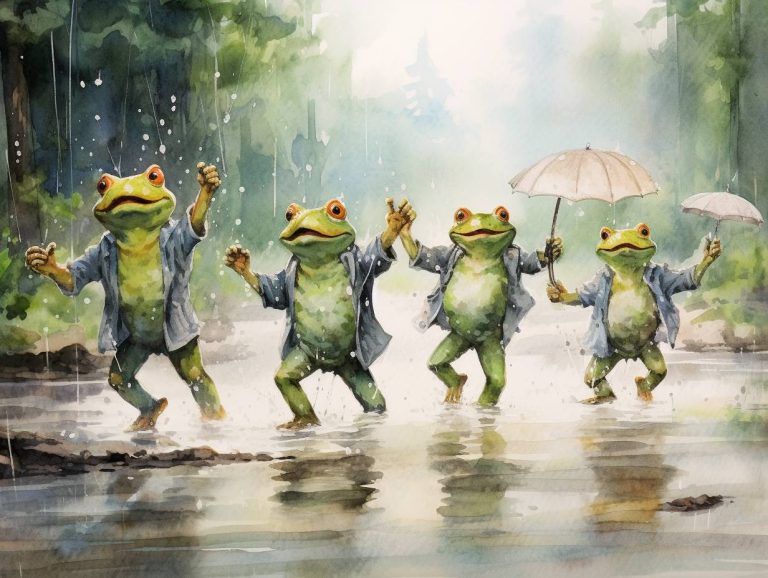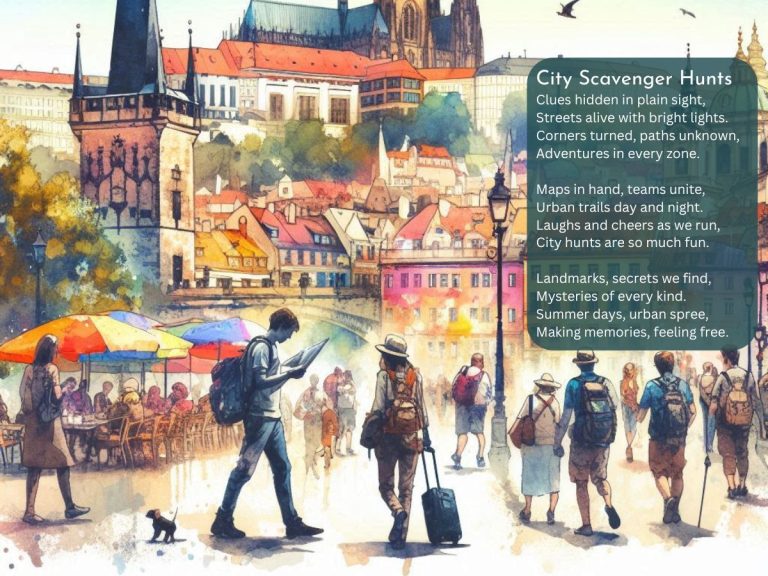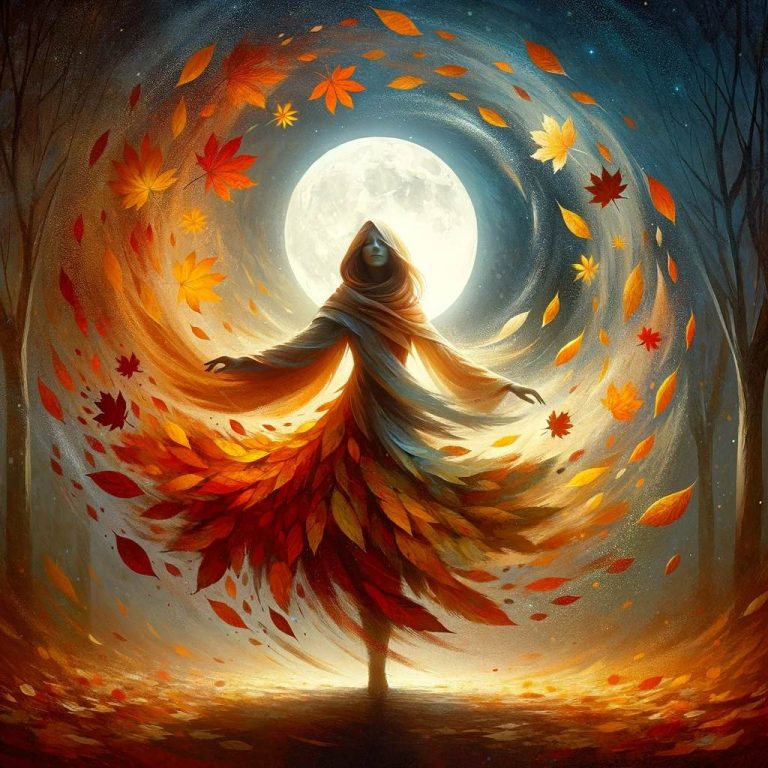March Poems and Quotes
Table of Contents
Promise of March
In March, where breezes dance,
Whispers not, but speaks in chance:
"Spring's embrace nears,
In the heart of winter's tears."

Meaning
This poem captures the transitional essence of March, acting as a bridge between the cold, barren winter and the forthcoming renewal of spring. It personifies March, suggesting that it communicates not through whispers but through the tangible, hopeful changes it brings. The imagery of spring nearing, contrasted with the remnants of winter’s tears, evokes a sense of anticipation and the natural cycle of renewal and growth.
Inspiration Behind
As I penned “March’s Promise,” I found myself inspired by the subtle yet profound transformations that occur in March. It’s a month that doesn’t whisper its intentions but rather reveals them through the budding of flowers and the milder air, hinting at spring’s arrival. The poem came to me during a chilly morning walk, as I noticed the first signs of spring peeking through the snow. It was a reminder that even in the tail end of winter, there’s a promise of renewal and warmth, a theme that resonates with the cycles of nature and life.
Echoes of March
March's march, a lion's roar,
Silent footsteps on the floor.
Lambs' laughter in the air,
Winter's end, spring's fair flair.
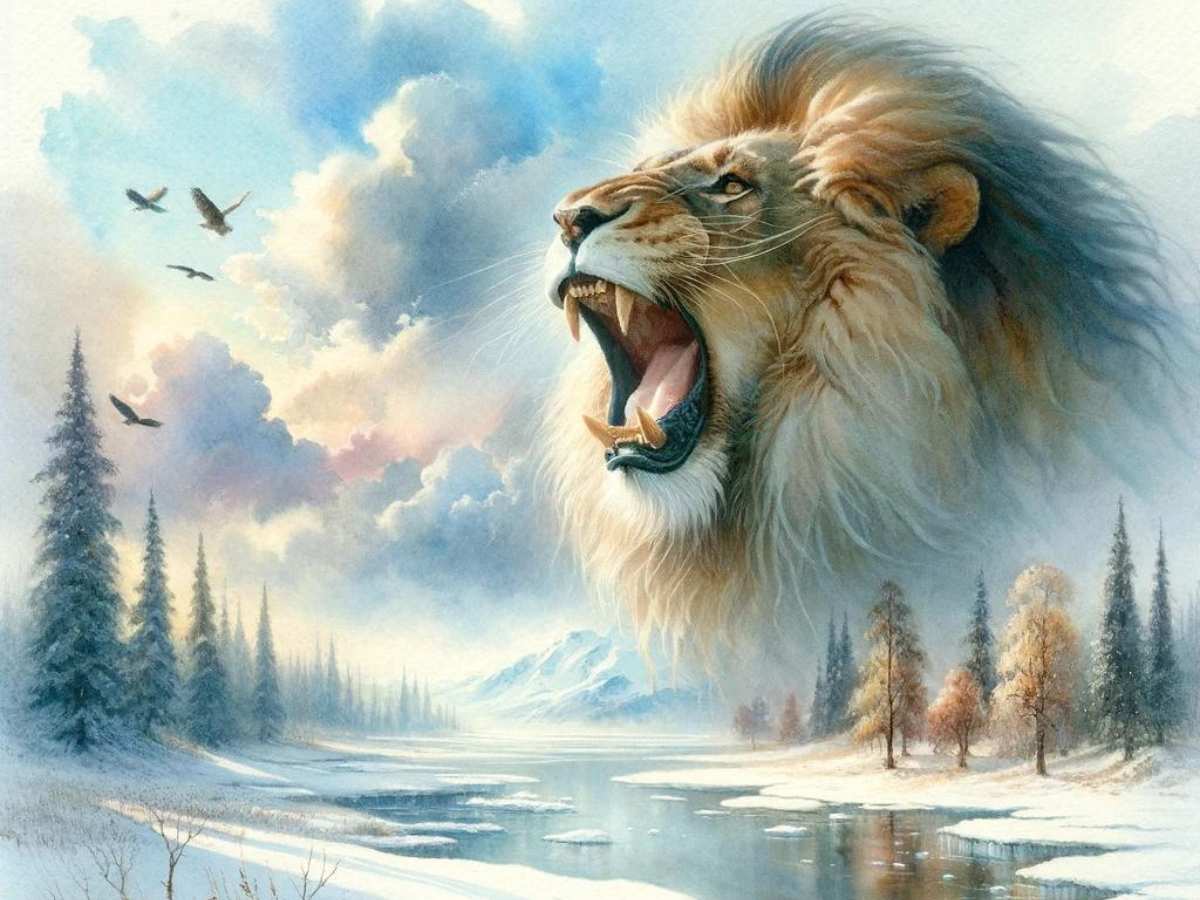
Meaning
This poem encapsulates the dual nature of March, starting with the fierceness of a lion and transitioning to the gentleness of a lamb. It embodies the old adage about March coming in like a lion and going out like a lamb, reflecting the month’s role in ushering out winter and welcoming spring. The “silent footsteps” symbolize the subtle, yet inevitable, shift towards warmer days, while “lambs’ laughter” and “spring’s fair flair” celebrate the joy and beauty of the new season.
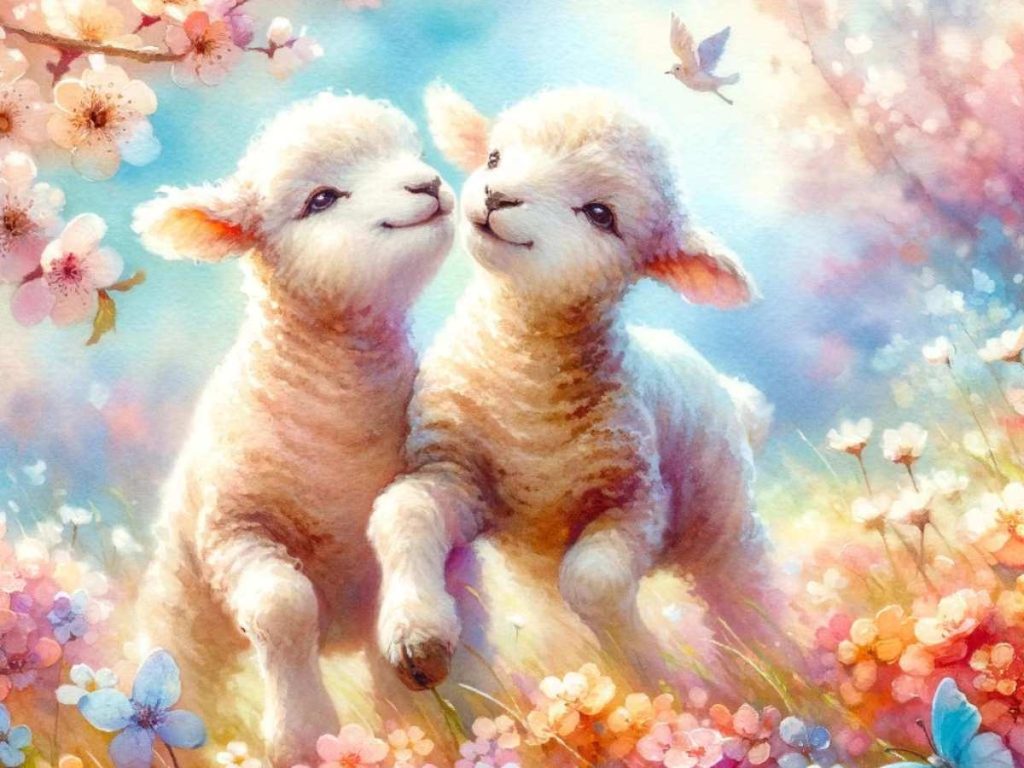
Inspiration Behind
Inspired by the stark contrasts within March itself, “Echoes of March” was born from observing the tumultuous beginning of the month, often marked by lingering winter chill and sudden storms, and its gradual softening into the mild and rejuvenating embrace of spring. The imagery of lions and lambs parallels the dramatic weather shifts, serving as metaphors for the transformation and renewal that define this time of year. Crafting this poem felt like narrating the story of winter’s farewell and spring’s welcome—a time of change, hope, and natural beauty.
March’s Musing
March whispers to the soil,
Awakening the seeds with its toil.
A symphony of blooms soon to unfurl,
Nature's canvas begins to swirl.
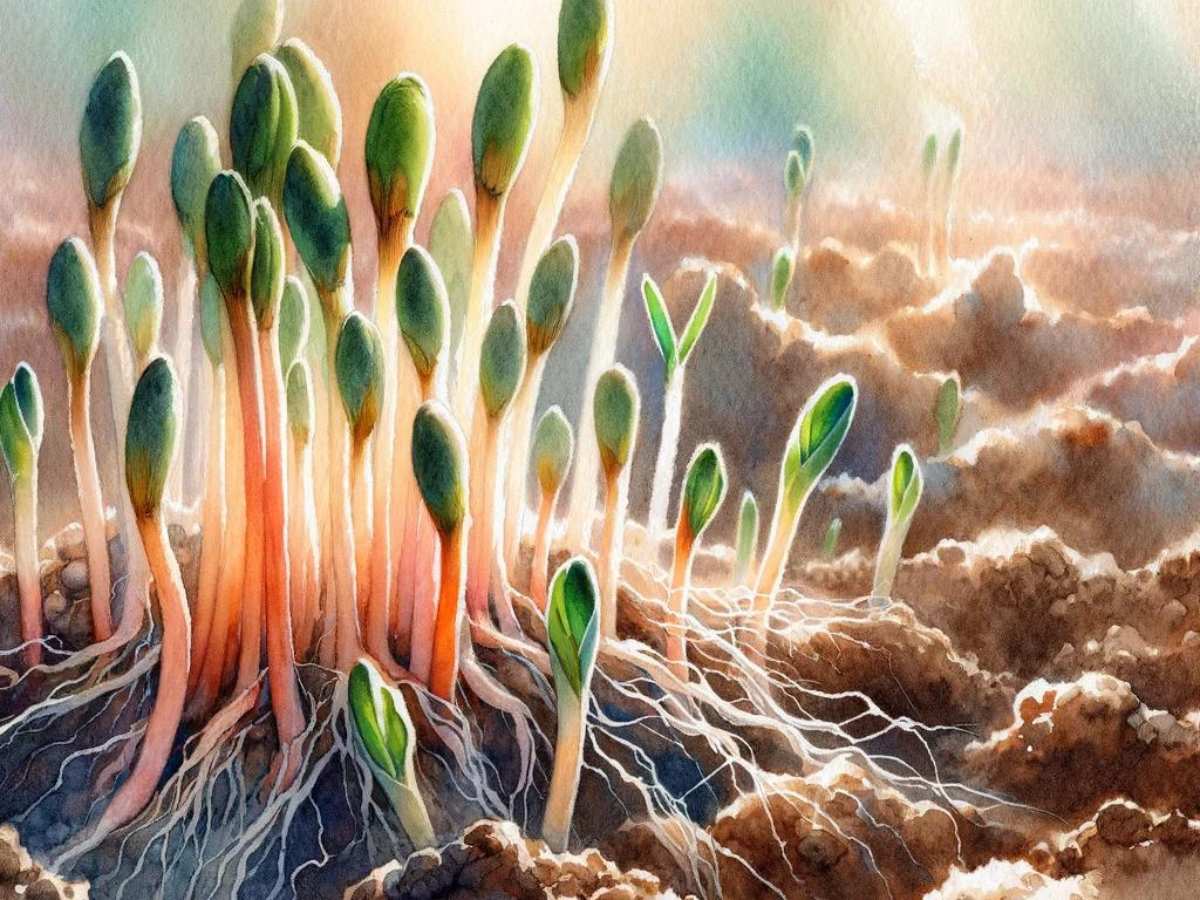
Meaning
This poem portrays March as a time of awakening and renewal, emphasizing its role in rousing the dormant seeds beneath the soil. The personification of March whispering suggests a gentle yet persuasive influence on the natural world, leading to the emergence of new life. The imagery of a “symphony of blooms” and Nature’s canvas swirling with colors captures the vibrant transformation that takes place, highlighting the beauty and dynamism of spring’s arrival.
Inspiration Behind
While crafting “March’s Musing,” I was inspired by the quiet yet profound transformation that occurs in nature during March. The sight of the first green shoots breaking through the soil, the gradual lengthening of days, and the air filled with the promise of warmth and color stirred my imagination. This poem is a reflection on the gentle power of March to renew the earth, a theme that resonates deeply with the cycles of growth and rebirth inherent in the natural world.
March’s Farewell
March bids adieu with a sigh,
Winter's cloak begins to fly.
Underneath, a world reborn,
Spring's first breath, a new dawn.
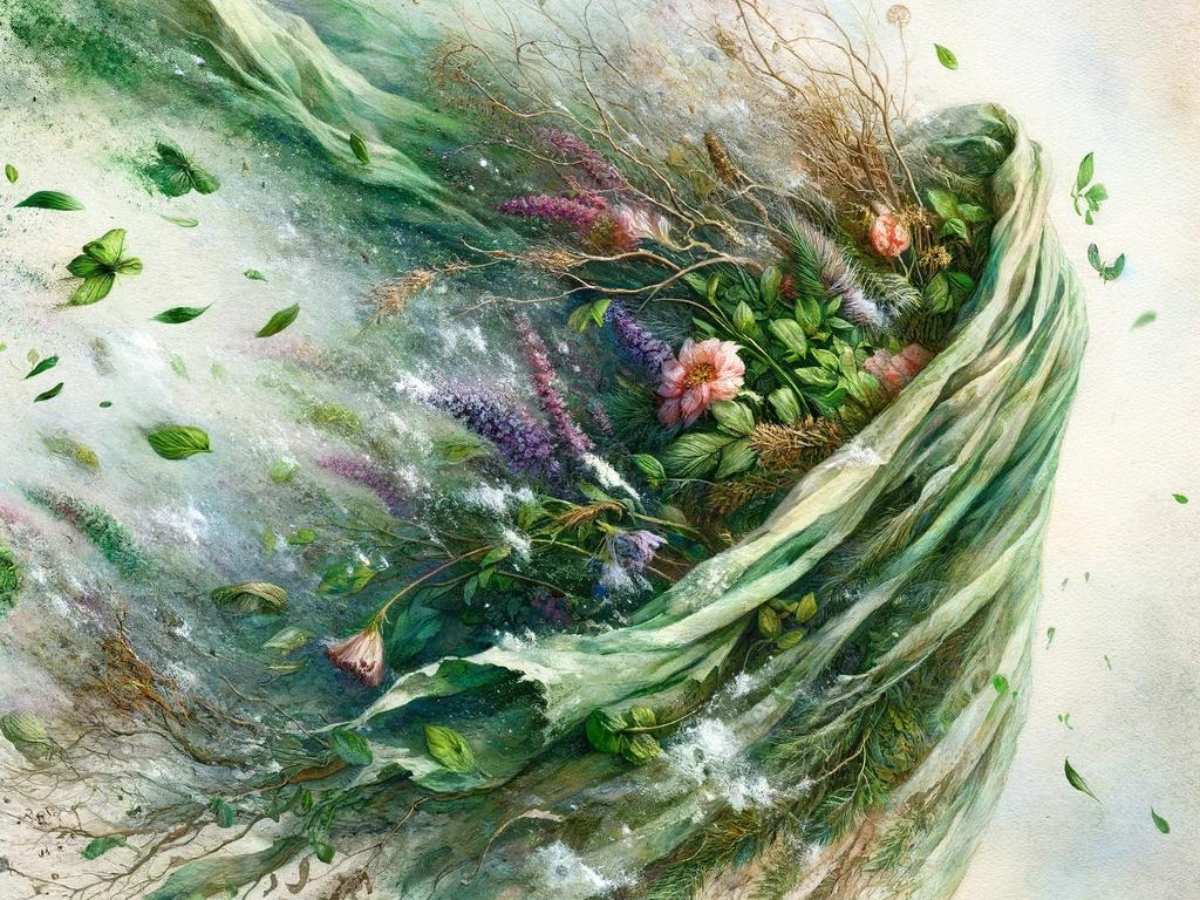
Meaning
This poem reflects on the transformative power of March as it transitions from the remnants of winter to the burgeoning life of spring. March’s farewell is characterized by a gentle sigh, symbolizing the end of the cold, dormant period and the beginning of a more vibrant, lively season. The imagery of winter’s cloak flying away reveals a world reborn, with spring’s first breath symbolizing new beginnings and the fresh start that nature undergoes during this time.
Inspiration Behind
Inspired by the palpable shift in the air as March draws to a close, “March’s Farewell” came to life from witnessing the subtle yet significant changes in the natural world. The melting of snow, the first buds on trees, and the lengthening days all spoke to me of a world waking up from its winter slumber. This poem is a tribute to that moment of transition, capturing the beauty and hope that comes with the arrival of spring.
March’s Whisper
"In March, a whisper,
Brief, yet clear."
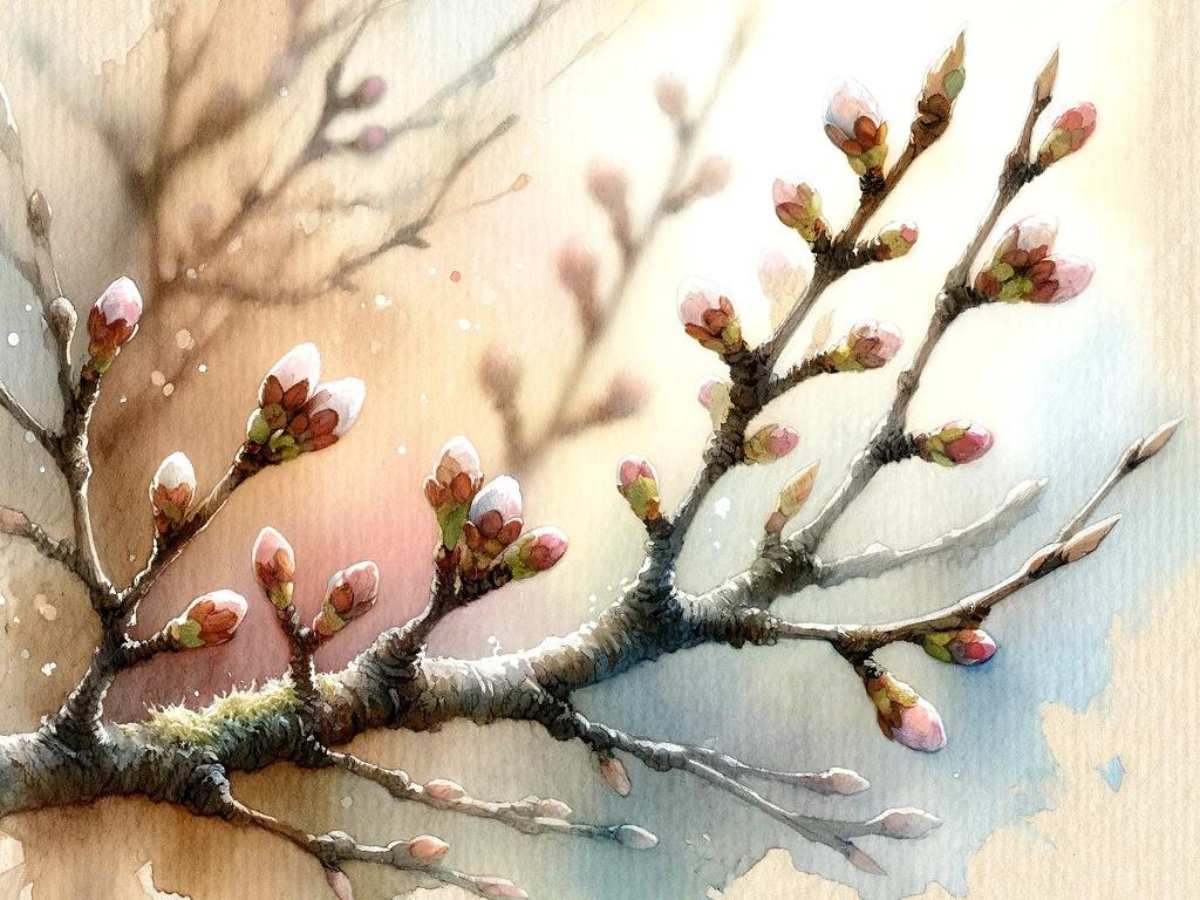
Meaning
This poem, in its brevity, captures the essence of March as a time of subtle yet impactful change. The “whisper” symbolizes the gentle nudging of nature as it transitions from the harshness of winter to the promise of spring. It suggests that even the slightest signs of change—barely audible, yet unmistakably present—herald the coming of a new season.
Inspiration Behind
The inspiration for “March’s Whisper” came from the quiet moments of early spring when the change in the air is almost imperceptible but deeply felt. It reflects the beauty of those small signs that spring is on its way—the slight warmth in the breeze, the first buds on trees, the melting snow. This poem is a homage to the quiet power of transformation, reminding us that significant shifts often begin with the softest whisper.
March’s Glimpse
"March nods,
Spring leaps."
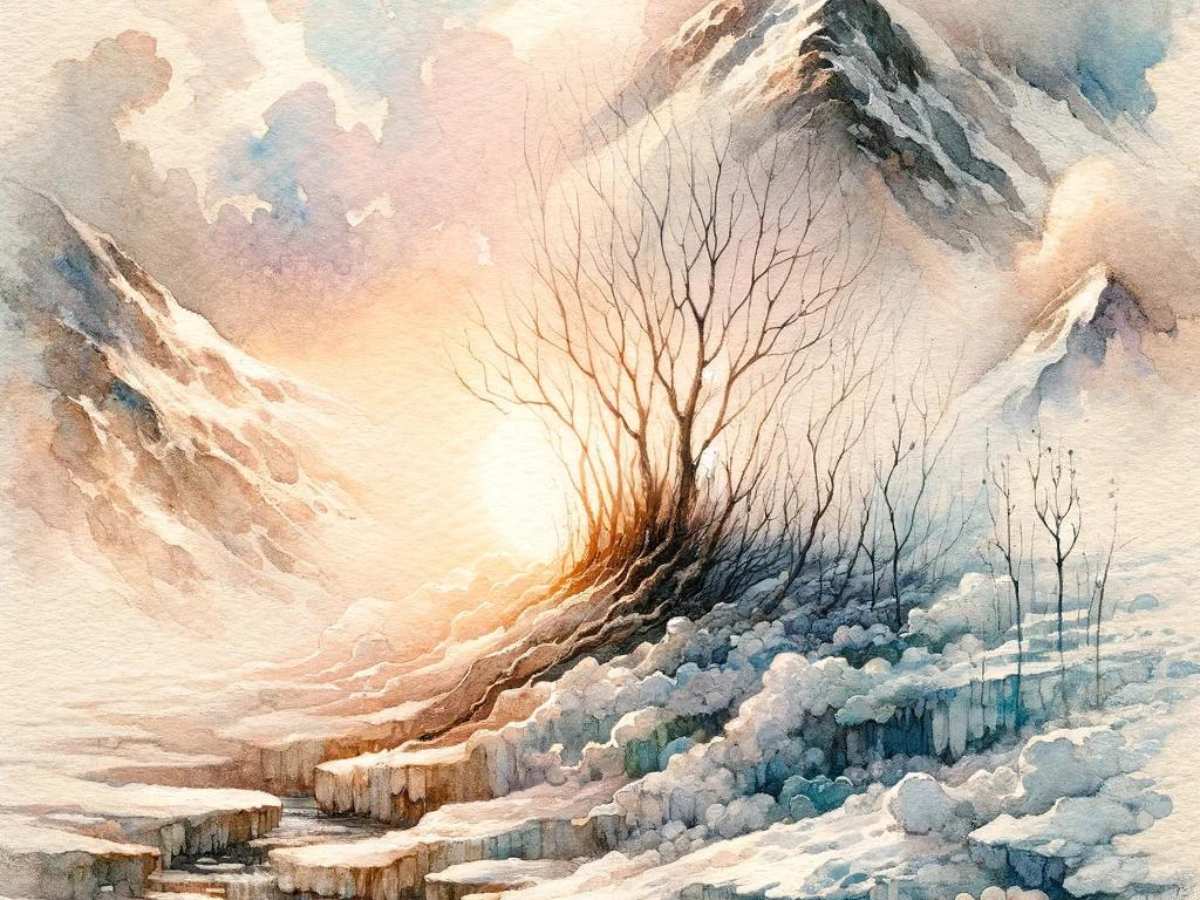
Meaning
This succinct poem captures the pivotal moment when March acknowledges the arrival of spring with a simple nod, leading to the exuberant leap into the season of renewal and growth. It reflects the transition from the contemplative, often unpredictable nature of March to the vibrant energy of spring, encapsulated in just two lines.
Inspiration Behind
“March’s Glimpse” was inspired by observing the subtle shifts that herald the end of winter and the beginning of spring. It struck me how the smallest signs in March—like the lengthening days and the budding of plants—signal a major transition in the natural world. This poem is a nod to those moments of change, brief yet profound, that mark the seasons’ passage.
March’s Curtain
"March bows,
Spring applauds."
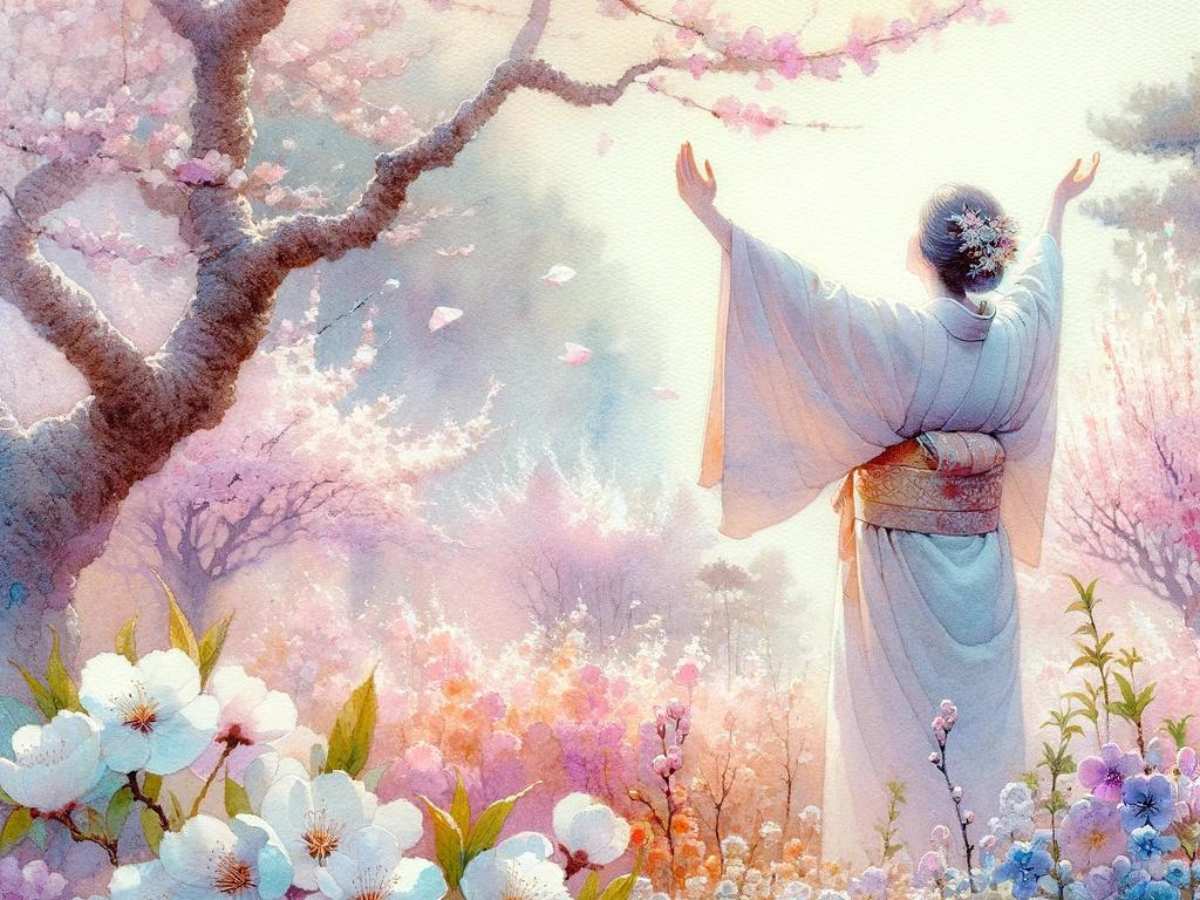
Meaning
This poem succinctly captures the theatrical exchange between March and spring, where March’s departure is likened to a bow at the end of a performance, and the arrival of spring is the audience’s applause. It symbolizes the natural progression and appreciation for the cycle of seasons, emphasizing the seamless transition and mutual recognition between the end of one season and the beginning of another.
Inspiration Behind
Inspired by the dramatic and yet harmonious change of seasons, “March’s Curtain” emerged from the imagery of nature as a grand stage where each month plays a specific role. March, in this case, is portrayed as an actor who has completed its part, receiving acknowledgment through the vibrant response of spring. This metaphorical representation highlights the beauty and interconnectedness of seasonal shifts, where each phase is celebrated and welcomed.
March’s Wink
"March winks,
Spring sings."
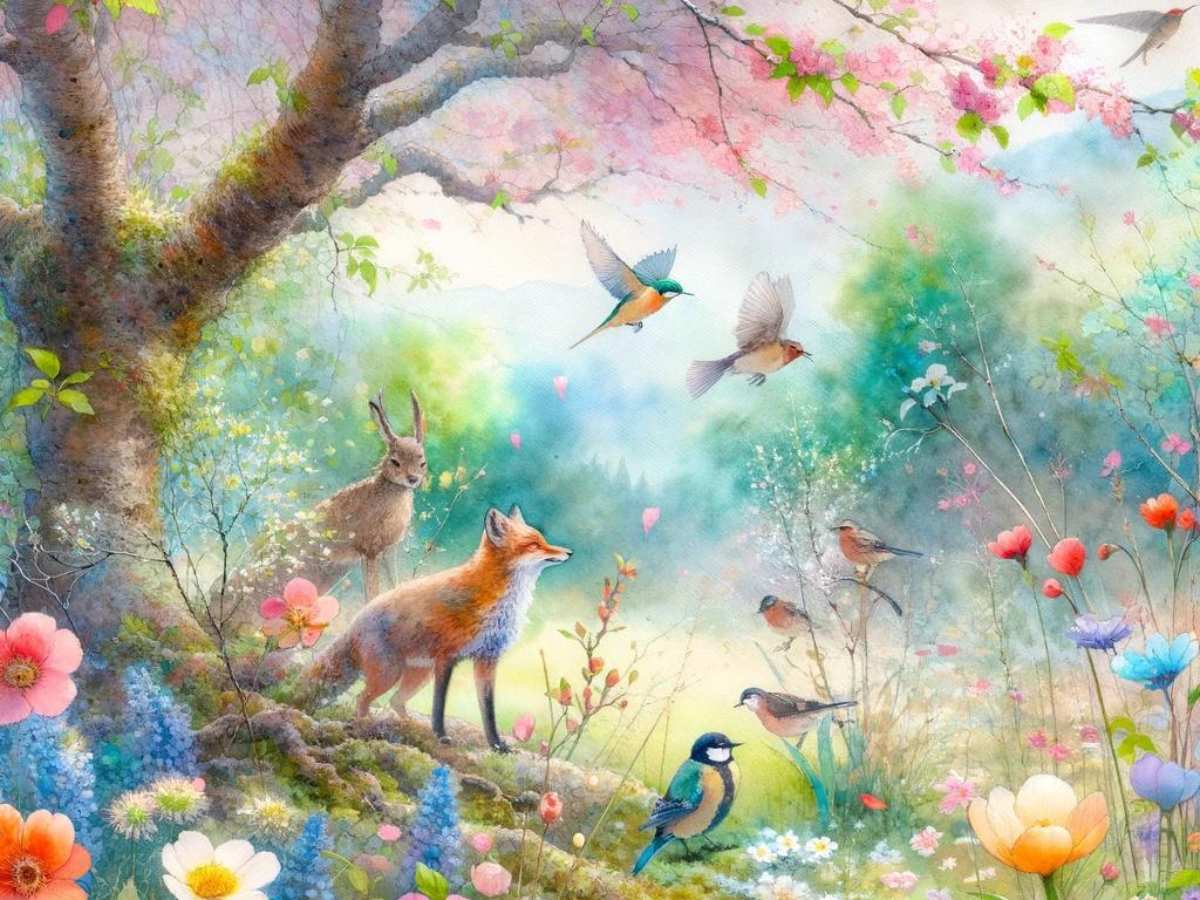
Meaning
This poem captures a playful and instantaneous moment between March and spring, suggesting that March’s departure is not just a transition but a cheeky acknowledgment of spring’s arrival. The wink personifies March, giving it a character that is both aware and approving of the change it precedes. Spring’s response, singing, symbolizes the vibrant, joyful explosion of life that characterizes the season, responding to March’s subtle cue with a burst of energy and color.
Inspiration Behind
The inspiration for “March’s Wink” came from a sudden realization of how quickly March seems to pass, almost as if it’s in on the secret of the forthcoming abundance of spring. Observing the first real signs of spring—birds chirping, flowers blooming, and trees budding—I imagined March giving a knowing wink before making its exit, setting the stage for spring’s grand entrance. This poem is a light-hearted depiction of that moment, embodying the playful exchange between the seasons.
March’s Sigh
"March sighs,
Spring flies."
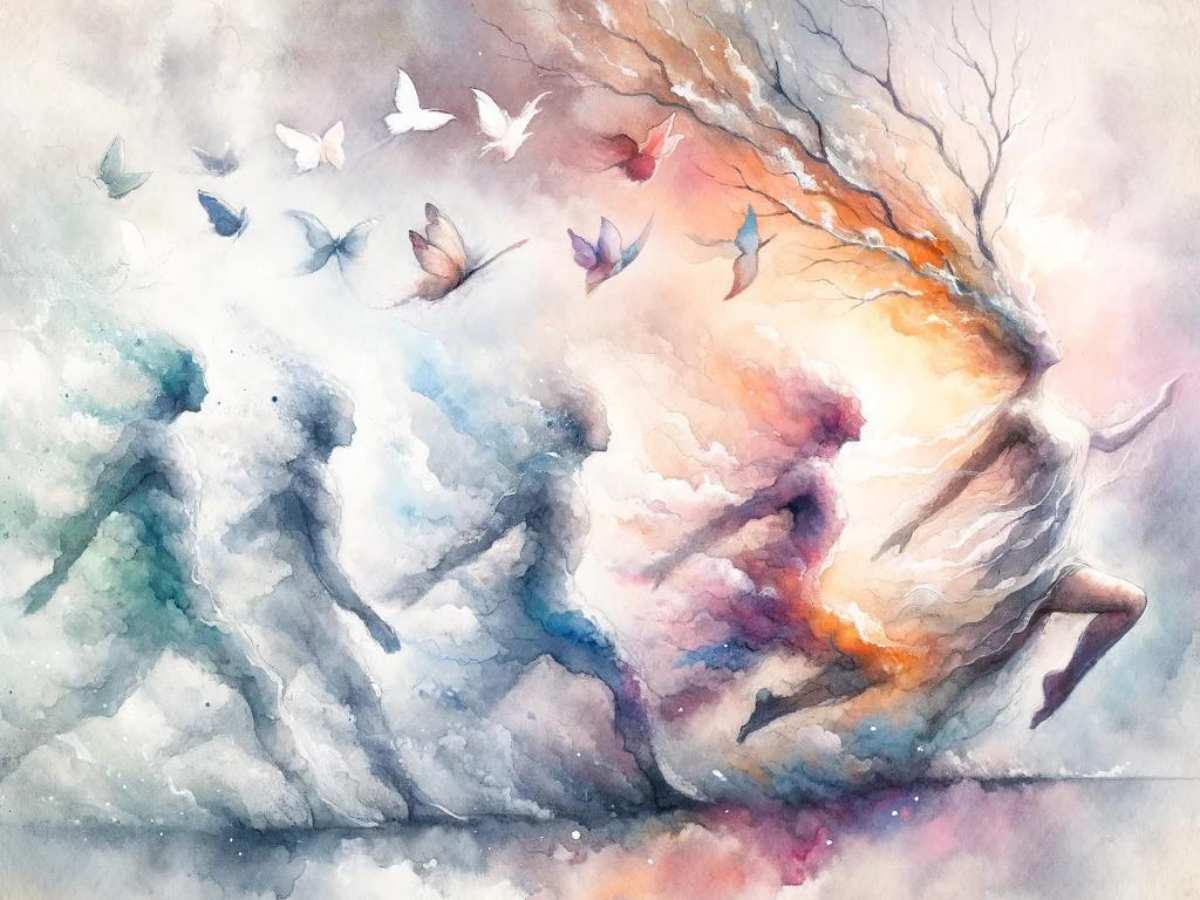
Meaning
This brief poem encapsulates the transitional essence of March, where its end is marked by a contemplative sigh, signifying both a conclusion to the chill of winter and an ushering in of the vibrant energy of spring. The contrast between the sigh and flight symbolizes the shift from introspection to action, from the dormant to the dynamic, as spring takes to the air with vigor and vitality.
Inspiration Behind
Inspired by the quiet moments that precede the burst of spring life, “March’s Sigh” reflects on the subtle, often overlooked transition between seasons. It was during a late March evening, as the cool air mingled with the scent of emerging blooms, that the concept of the poem took shape. This sigh of March is not one of resignation but of readiness, a natural preparation for the forthcoming explosion of life that spring promises.
End Words
These March Poems and Quotes collectively capture the nuanced transition from March to spring, a period marked by subtle changes and dramatic transformations. Through vivid imagery and concise language, they explore the multifaceted relationship between the fading chill of winter and the burgeoning warmth of spring. Each piece serves as a snapshot of this seasonal shift, highlighting the cyclical nature of time and the perennial promise of renewal. Together, they form a mosaic of moments that reflect the enduring beauty and resilience of the natural world, reminding us of the simple, yet profound, rhythms that guide our lives.

